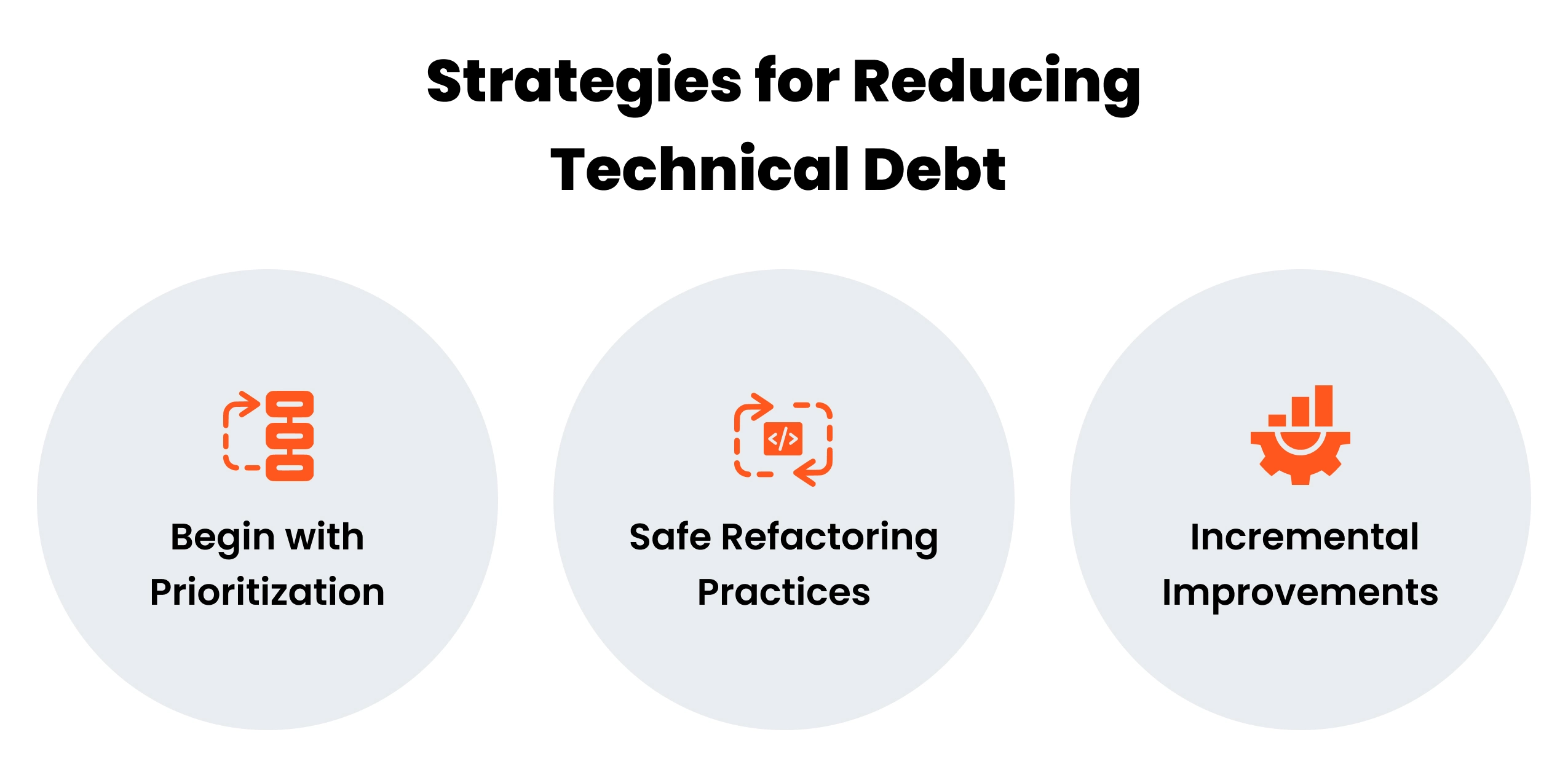Table of Contents
Chasing a “clean code” unicorn
Technical debt, a term coined by Ward Cunningham, describes the gap between a programmer’s evolving understanding of a system and the existing codebase shaped by earlier, less informed decisions. As development progresses, it’s rare to achieve a perfect implementation from the start. Technical debt accumulates as the code reflects outdated solutions and assumptions, rather than the current problem and solution space.
Since concepts of “clean code” evolve with new frameworks and languages, what is considered optimal today might become obsolete soon. To manage technical debt, developers should focus on minimalism — reducing unnecessary complexity and embracing simplicity. This approach helps maintain code quality, adaptability, and relevance, minimizing technical debt and making the codebase more resilient to future changes.
The Value of Code as an Asset
The only guaranteed way to avoid technical debt is to avoid writing code altogether. This notion, while true, is akin to saying “To avoid missing in basketball, don’t shoot.” Shooting is essential in basketball, so writing code is in software development. Code is an asset, and technology-driven organizations cannot function or innovate without it. However, it is crucial to understand that assets require maintenance to remain valuable. Writing code to solve problems is just the beginning; ensuring that the code remains aligned with the problem and maintaining it effectively are essential to keeping technical debt at bay.
Code as a Fundamental Asset
Code is the backbone of software applications, enabling functionalities, driving business processes, and delivering value. For any technology-driven organization, code is a fundamental asset. Well-written, efficient, and maintainable code can enhance productivity, provide competitive advantages, and support the scalability of business operations. Therefore, recognizing the intrinsic value of code is crucial.
Understanding Code Liability
Despite its value, code can accumulate liabilities. These liabilities often arise when there is a misalignment between the code and various aspects of the problem it is intended to solve. Here are some common scenarios where code can become a liability:
- When the Code Does Not Match the Problem. Code becomes a liability when it fails to address the core problem it was designed to solve. This misalignment can occur due to changes in business requirements, incorrect initial specifications, or evolving user needs. When the code does not effectively solve the problem, it becomes a burden rather than an asset.
- When the Code’s Internal Model Does Not Match the Problem. The internal model of the code refers to how the code structures and organizes data and processes to solve the problem. The code will struggle to meet the desired outcomes if this internal model is flawed or outdated. For example, an inefficient algorithm or poor data management can lead to performance bottlenecks and functional limitations.
- When the Code’s Internal Model Does Not Match the Mental Model of Users and Programmers. Effective software design requires the code’s internal model to align with the mental models of both users and programmers. Users should find the software intuitive and easy to use, while programmers should find the code logical and maintainable. Discrepancies between these mental models and the code’s internal structure can lead to user frustration, increased training costs, and higher maintenance efforts.
- When the Code’s Internal Model Does Not Match the Code’s Internal Interfaces. Internal interfaces within the code are the touchpoints where different components interact. If these interfaces are inconsistent or poorly designed, they can cause integration issues, make debugging difficult, and hinder future development. Ensuring that internal interfaces are well-defined and cohesive is essential for maintainable code.
- When There Is More Code Than Necessary to Match the Problem. Over-engineering is a common pitfall in software development. Writing more code than necessary to solve a problem adds complexity and increases the potential for bugs. Excessive code also makes the system harder to understand and maintain. Striving for simplicity and writing only the code needed to address the problem can mitigate this liability.
- Technical Debt: When Code Becomes Obsolete. A key aspect of technical debt is when code becomes obsolete as a system evolves. Features may change, be replaced, or be abandoned, leaving behind legacy code that’s no longer useful. This redundant code increases complexity, making it harder for developers to maintain and understand the system, and can lead to bugs or security issues. To manage technical debt, regularly audit and refactor the codebase to remove outdated elements, ensuring the system remains lean, maintainable, and secure.
While technical debt is often seen as a negative aspect, it can be harnessed to your advantage if managed properly. By understanding its roots and impacts, you can develop strategies to steer development towards a cleaner code base.
- Steering Development with Iterative Enhancement
One effective strategy is to adopt an iterative enhancement approach. Instead of aiming for perfection in the first release, focus on incremental improvements. This allows for continuous refinement and reduces the risk of accumulating technical debt. Regularly revisiting and refactoring the code ensures it remains clean and maintainable. - Secure a Competitive Edge
Managing technical debt effectively can also provide a competitive edge. A clean code base allows for faster development cycles, easier implementation of new features, and quicker adaptation to market changes. You can respond more rapidly to business requirements, improving your agility and competitiveness by minimizing technical debt. - Planning on Taking a Breather
Recognize the importance of pause while addressing technical debt. Allocating dedicated time for refactoring and debt repayment can prevent it from spiraling out of control. Regularly scheduled maintenance sprints or technical debt reduction phases ensure that the code base remains manageable and reduces the long-term costs associated with high debt levels.
Strategies for Reducing Technical Debt
Effective strategies for reducing technical debt begin with prioritization.
It’s crucial to identify and address the most critical areas of debt first, as these often have the greatest impact on the system’s performance and maintainability. Prioritizing technical debt involves assessing the potential risks and benefits of addressing different debt items and focusing on those providing the highest return on investment. By tackling the most pressing issues first, teams can mitigate risks and improve the overall health of the codebase more efficiently.
Safe refactoring practices are another essential component in managing technical debt.
Effective refactoring is essential for managing and reducing technical debt, and safe refactoring practices are key to ensuring that changes don’t introduce new issues into the codebase. One critical aspect of this process is maintaining thorough test coverage with several software test levels. While there is a common belief that unit tests for business logic may not always be necessary, ensuring comprehensive test coverage across the system is vital. This approach allows developers to refactor code, knowing that the system’s overall functionality will be preserved, and any issues can be quickly identified and addressed confidently.
Beyond test coverage, the importance of deep technical planning and gathering additional client requirements cannot be overstated when addressing technical debt. Refactoring that aims to resolve technical debt benefits greatly from careful planning and design. Developers can create more efficient, maintainable solutions that align with long-term business goals investing time in thorough technical design and understanding the full scope of client needs. This proactive approach reduces the risk of introducing new problems during refactoring and ensures that the development process remains focused on delivering value while effectively managing technical debt.
In addition to prioritization and refactoring, incremental improvements are vital for managing technical debt.
Rather than attempting large-scale overhauls, which can be risky and disruptive, teams should focus on making small, continuous enhancements to the codebase. This approach allows for steady progress and reduces the likelihood of introducing significant new issues. Incremental improvements can include regular code cleanups, updating outdated dependencies, and gradually refactoring problematic areas of the code. By embedding these practices into the daily workflow, teams can steadily chip away at technical debt and foster a culture of continuous improvement.
JetRuby practices
At JetRuby, we integrate these strategies into our development process to manage technical debt effectively. We maintain a clean and robust codebase prioritizing high-impact debt, employing safe refactoring practices with comprehensive test coverage, and making incremental improvements. This proactive approach ensures that our software remains maintainable, scalable, and aligned with the latest industry standards, ultimately delivering high-quality solutions for our clients.
We recognize that technical debt is an inevitable part of the development process, but we are committed to managing it effectively to maintain a clean and robust codebase. While understanding the intricacies of managing technical debt, we never lose sight of our clients’ business goals. Our approach balances immediate business needs with sustainable development practices, ensuring that technical debt is used as a tool rather than a burden. By integrating these practices, we ensure that our technical debt is manageable and our codebase remains an asset, not a liability.
…we tried to keep it short, but this article grew like technical debt:)





